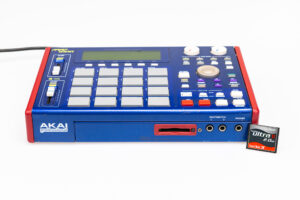Top 5 MPC 1000 Beat Making Tips for Punchier Drums
Introduction

Punchy drums are the heartbeat of every memorable beat. For producers and beatmakers using Crafting drums that cut through the mix and energize a track with the Akai MPC 1000 is both an art and a science. This comprehensive guide goes far beyond the basics, offering in-depth insights and practical techniques for making your drums sound louder, cleaner, and stand out in any genre. Written in the architect personality style and the MPC 1000 Sounds brand voice, this article is designed to empower every personality type—from analytical planners to spontaneous creators—with actionable, inspiring advice and how to have punchier drums with an MPC 1000 sample pack.
Table of Contents
- Why Drum Punch Matters in Modern Production
- The Science of Punch: What Makes a Drum Sound “Punchy”?
- Tip 1: Start with the Right mpc1000 sample pack
- Tip 2: Layering for Depth and Impact with an sample pack
- Tip 3: Velocity, Groove, and Humanization Using Your sample pack
- Tip 4: Processing—EQ, Compression, and Beyond for Your sample pack
- Tip 5: Arrangement, Space, and Creative FX with an sample pack
- Advanced Techniques: Choke Groups, Ghost Notes, and More
- Workflow Templates for Different Genres Using an sample pack
- Troubleshooting and FAQs
- Community Wisdom and Real-World Examples
- Conclusion and Next Steps
1. Why Drum Punch Matters in Modern Production
A punchy drum sound grabs the listener’s attention, drives the groove, and gives your track professional polish. In genres like hip hop, trap, pop, and electronic music, punchy drums are non-negotiable. They provide energy, clarity, and emotional impact.
2. The Science of Punch: What Makes a Drum Sound “Punchy”?
Punch is a combination of:
- Fast attack (the initial hit)
- Controlled decay (how quickly the sound fades)
- Frequency balance (emphasis on low-mids and highs)
- Dynamic range (contrast between loud and soft)
- Transient clarity (the sharpness of the initial hit)
Understanding these elements helps you make informed choices at every stage of drum creation. For more on drum sound science, check out this guide from Sound On Sound.
3. Tip 1: Start with the Right MPC 1000 sample pack
Why Sample Selection Is Everything
Your drum sound is only as good as your source material. High-quality samples from a curated sample pack provide the foundation for punchy drums.
What to Look For in an mpc 1000 sample pack
- Clean, unprocessed hits (so you can shape them yourself)
- Multiple velocity layers
- Genre-appropriate sounds (e.g., boomy kicks for hip hop, snappy snares for pop)
- Consistent file formats (WAV recommended)
Recommended Packs
Organizing Your mpc 1000 sample pack Library
- Tag samples by type (kick, snare, hat, etc.)
- Create folders for favorite sounds
- Regularly audition and update your collection. For organization tips, visit our Sample Library Organization Guide.
4. Tip 2: Layering for Depth and Impact with an mpc 1000 sample pack
The Power of Layering in Your mpc 1000 sample pack
Layering is the secret weapon for thick, punchy drums. By combining multiple samples, you can create hits that are both powerful and unique.
How to Layer on the MPC 1000 sample pack
- Assign up to four samples to a single pad
- Use velocity switching for dynamic layers
- Blend acoustic and electronic samples for hybrid sounds
Layering Strategies for Your mpc 1000 sample pack
- Combine a subby kick with a clicky top layer
- Layer a snappy snare with a clap or rimshot
- Add subtle textures (vinyl crackle, percussion) for depth
Pro Tip: Use the MPC 1000’s program mode to fine-tune volume, pitch, and pan for each layer. For more layering tips, check out our Layering Drums Tutorial.
5. Tip 3: Velocity, Groove, and Humanization Using Your mpc 1000 sample pack
Why Groove Matters in Your mpc 1000 sample pack
Robotic drums sound flat. Humanized grooves add life and movement.
Techniques for Humanizing Your sample pack
- Vary pad velocity when recording patterns
- Shift drum hits slightly off the grid for swing
- Use the MPC 1000’s quantize and swing functions creatively
Ghost Notes and Accents in Your mpc 1000 sample pack
- Add quiet “ghost” hits between main beats for realism
- Accentuate certain hits for dynamic contrast
For All Personality Types
- Architects: Program intricate, evolving grooves
- Campaigners: Improvise live and capture spontaneous rhythms
- Logisticians: Build repeatable templates for consistent results
For more on groove and humanization, visit Attack Magazine’s Beat Dissected.
6. Tip 4: Processing—EQ, Compression, and Beyond for Your mpc 1000 sample pack
EQ for Clarity and Punch in Your MPC 1000 sample pack
- Cut muddy frequencies (200–400 Hz) from kicks and snares
- Boost attack (2–5 kHz) for snap
- Roll off unnecessary lows/highs to avoid clutter
Compression for Tightness in Your MPC 1000 sample pack
- Use fast attack and release to control transients
- Parallel compression (blend dry and compressed signals) for extra punch
Additional Processing for Your ample pack
- Saturation for warmth
- Transient shapers for sharper attacks
- Reverb/delay for space (use sparingly on drums)
On the MPC 1000 sample pack
- Use onboard effects or resample processed hits
- Save favorite FX chains as templates
For more on drum processing, see MusicRadar’s Drum Mixing Tips.
7. Tip 5: Arrangement, Space, and Creative FX with an MPC 1000 sample pack
Less Is More
Give each drum sound space to breathe. Avoid over-layering or crowding the mix.
Arrangement Tips for Your mpc 1000 sample pack
- Use silence and rests for impact
- Drop out drums for breakdowns and builds
- Automate FX for evolving drum sounds
Creative FX for Your mpc 1000 sample pack
- Filter sweeps for transitions
- Reverse hits for tension
- Bitcrushing for lo-fi vibes
Explore more arrangement and FX ideas in our Arrangement & FX Guide.
8. Advanced Techniques: Choke Groups, Ghost Notes, and More
Choke Groups
Assign open and closed hi-hats to the same choke group so one mutes the other—just like a real drum kit. Learn more about choke groups here.
Ghost Notes
Program subtle, low-velocity hits for realism and groove.
Pad Pressure and Aftertouch
Use pressure sensitivity for real-time FX control (if supported by your setup).
9. Workflow Templates for Different Genres Using an MPC1000 sample pack
Hip Hop with an MPC1000 sample pack
- Kicks: Deep, boomy, layered
- Snares: Crisp, with clap layers
- Hats: Swing and shuffle
Trap with an MPC1000 sample pack
- Kicks: Punchy, short
- Snares: Snappy, with rolls
- Hats: Fast, syncopated patterns
Pop/Electronic with an MPC1000 sample pack
- Kicks: Tight, focused
- Snares: Bright, with reverb
- Percussion: Creative FX and fills
For more workflow templates, visit our Workflow Templates Section.
10. Troubleshooting and FAQs
Q: My drums sound weak. What should I check?
A: Start with better samples, layer for thickness, and use EQ/compression to shape the sound.
Q: How do I avoid phase issues when layering?
A: Flip the phase on one layer if you hear thinness; adjust timing and pitch for best blend.
Q: Can I use third-party plugins with the MPC 1000?
A: Not directly, but you can process samples in your DAW and load them back into the MPC. For plugin tips, see Gearspace Forums.
11. Community Wisdom and Real-World Examples
Producer Spotlights
- Architect (INTJ): Designs complex, multi-layered drum kits for maximum punch and flexibility.
- Campaigner (ENFP): Experiments with found sounds and live resampling for unique textures.
- Logistician (ISTJ): Maintains a meticulously organized sample library for fast workflow.
- Mediator (INFP): Collaborates with other producers, sharing drum kits and workflow tips.
Community Tips
- “Always audition your drums in the context of a full mix.”
- “Don’t be afraid to resample and reprocess your hits.”
- “Join forums and share your favorite layering tricks.” For more tips, join our MPC 1000 Sounds Community.
12. Conclusion and Next Steps
Punchy drums are within reach for every MPC 1000 user. By focusing on quality samples, smart layering, expressive programming, and creative processing, you can craft beats that stand out in any genre. Remember, the journey to great drums is ongoing—experiment, learn from others, and let your creativity lead.
Next Steps:
- Download a new sample pack and audition fresh sounds
- Build a layered drum kit using the techniques above
- Share your results with the MPC 1000 Sounds community
- Explore more advanced tutorials in the Knowledgebase
Download Free MPC 1000 String Sounds and take your beats to the next level! For more in-depth guides and community support, visit the MPC 1000 Sounds Knowledgebase.
